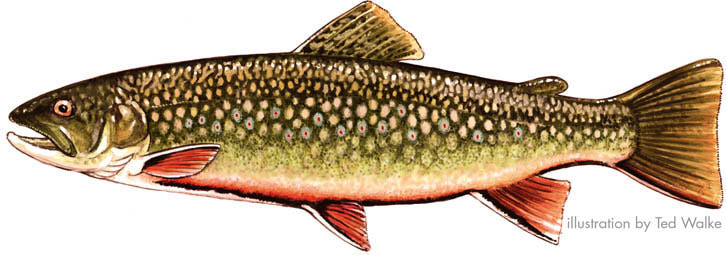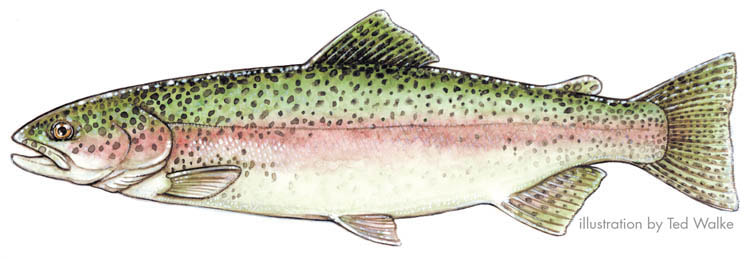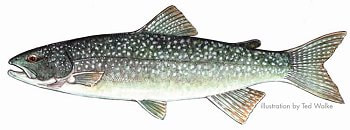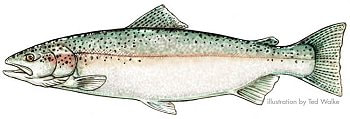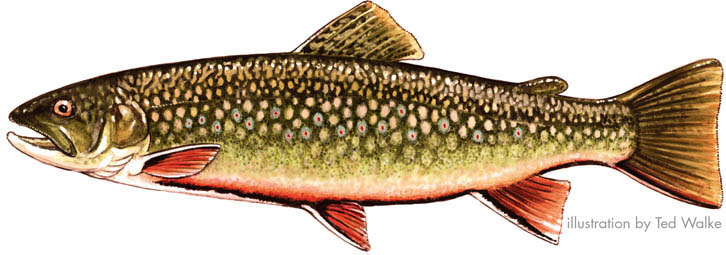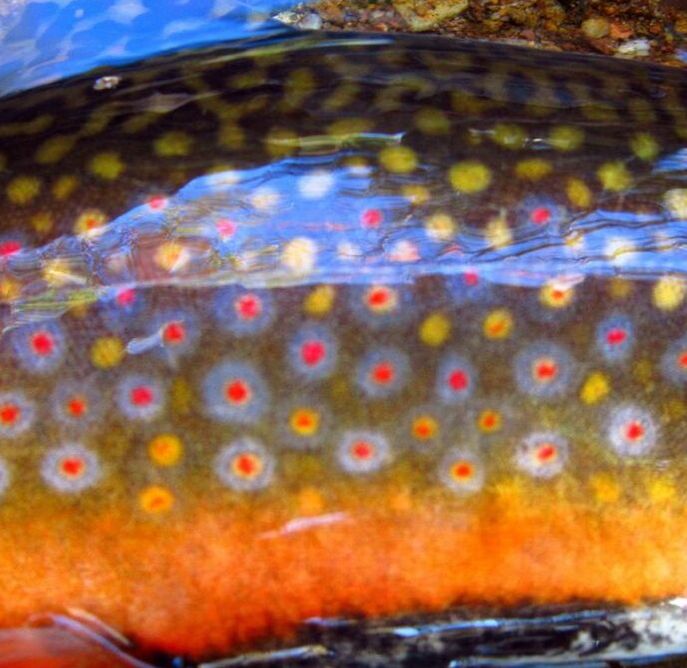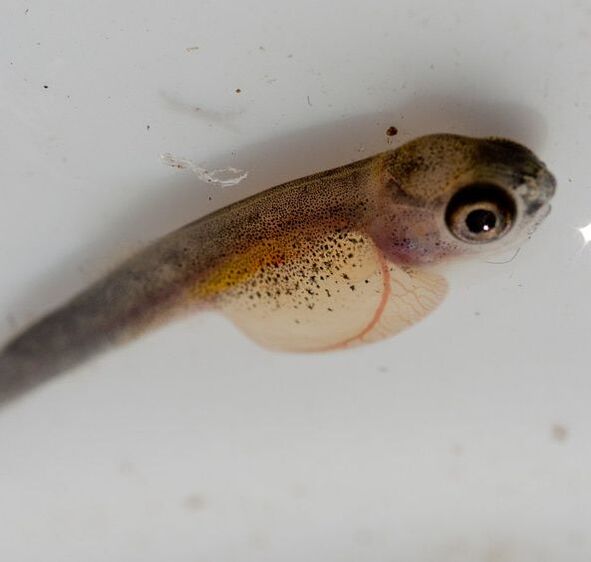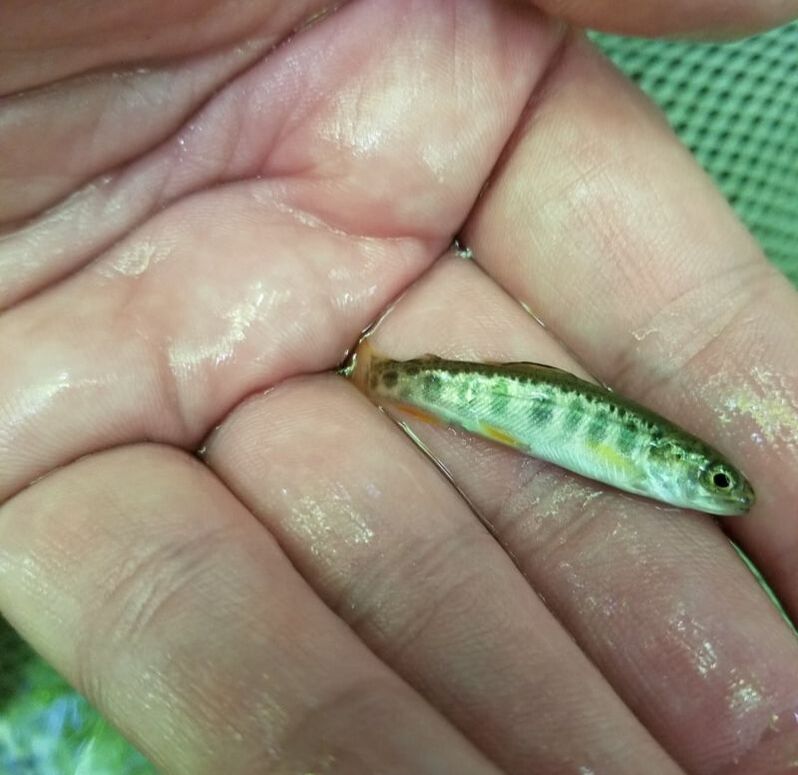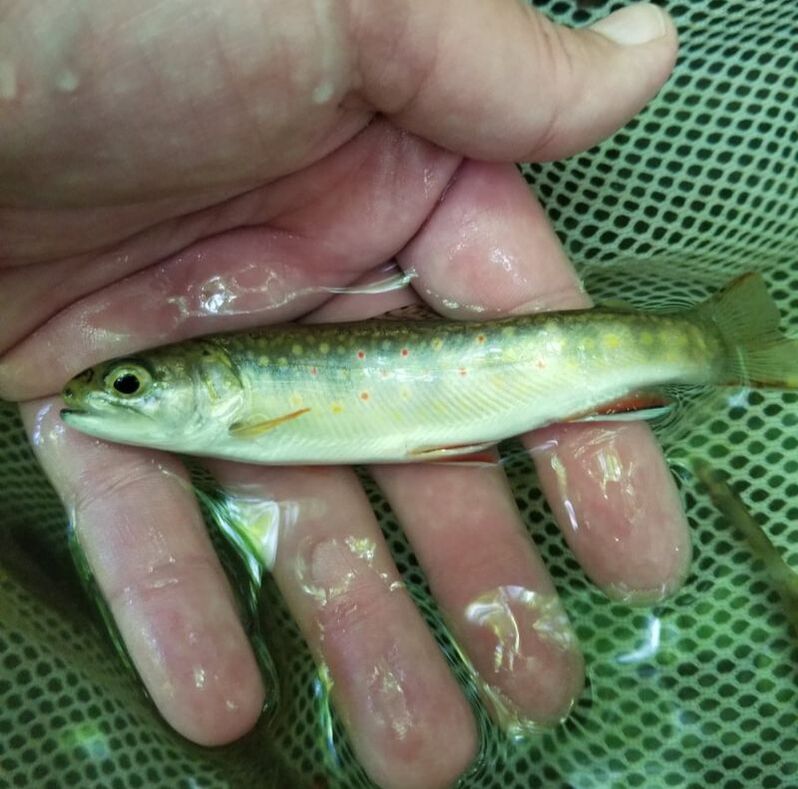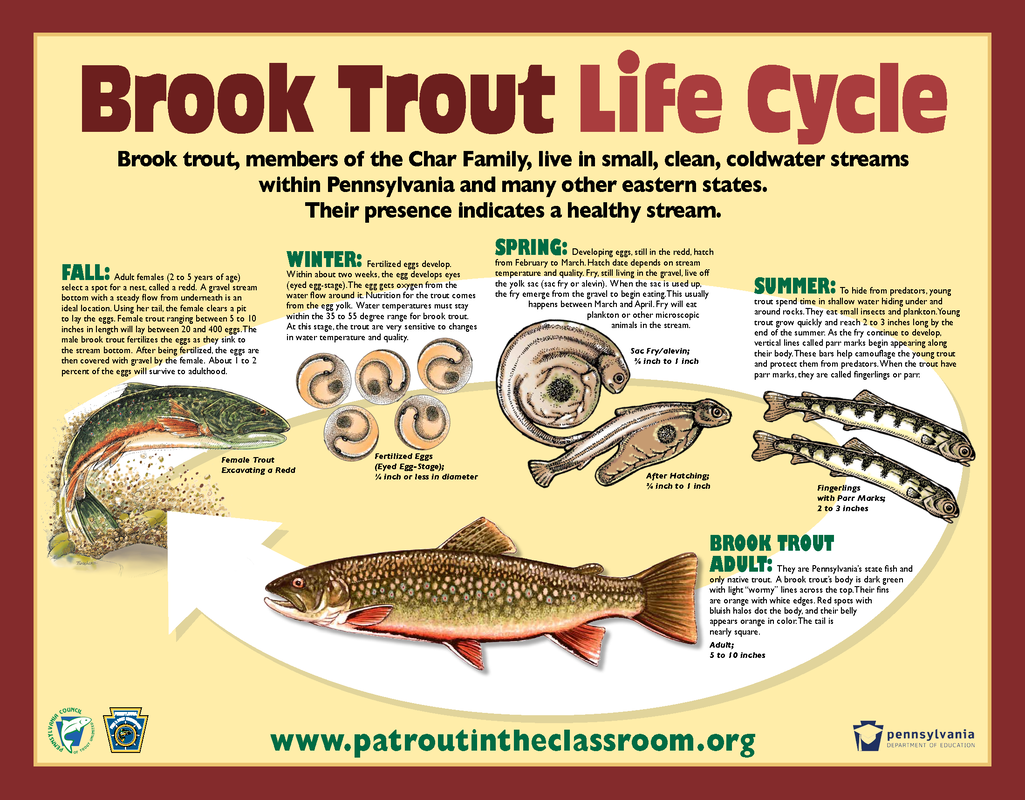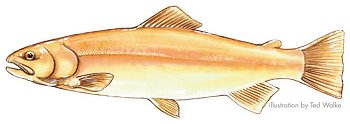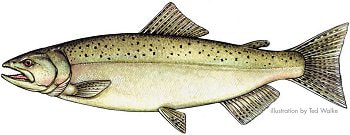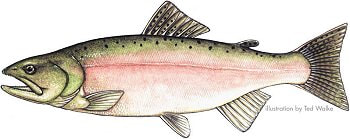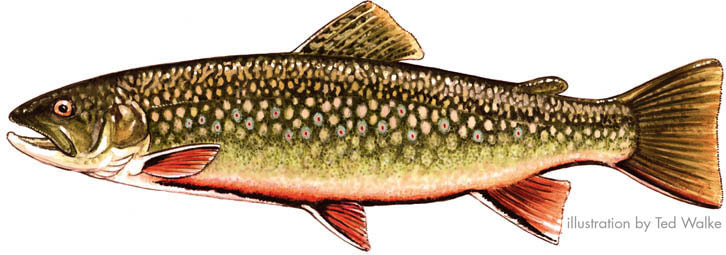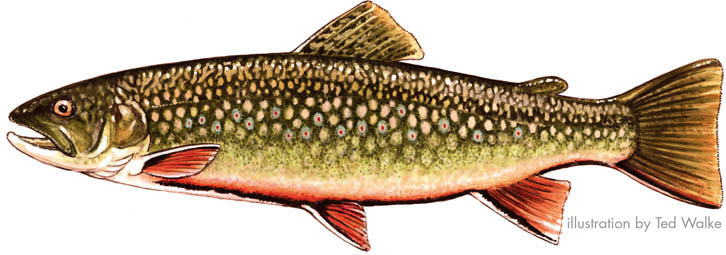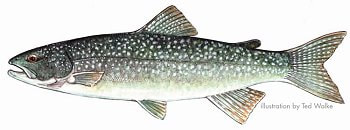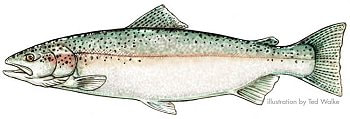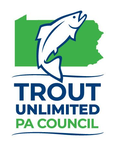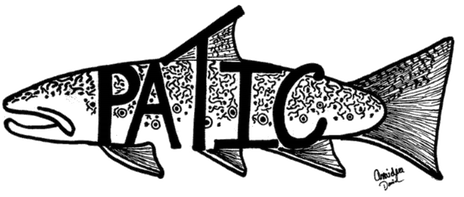Species Overview
|
The Brook Trout (Salvelinus fontinalis) is Pennsylvania’s official state fish. It is technically a char. It is related to the Arctic char of the Far North, the Dolly Varden and bull trouts of the West, and the Lake Trout. The chars live farther north than most other trout and salmon family members.
|
The Brook Trout’s original home was northeastern North America, through the Great Lakes, and south along the Appalachian Mountains to Georgia. It is the only stream trout that is native to Pennsylvania. The genus name “Salvelinus” is derived from an old name for char. The species name “fontinalis” means “of springs.” Brook Trout are sometimes called speckled trout, squaretails or just “brookies.” The Brook Trout is the only salmonid (trout/salmon) native to the streams and rivers of the eastern United States and, by extension, Pennsylvania.
IdentificationThe Brook Trout’s general body color is dark-green. Looking closer, its back is dark olive-green or gray-green, mottled with dark, squiggly or wormlike markings ("vermiculations") from head to tail. The sides and belly shade lighter, sometimes with green, gray or even lavendar tones, and additional irregular marks. The sides also have scattered red dots, surrounded by bright-blue halos. The belly is usually pale yellow-orange, with a blackish or gray streak down the middle. The pectoral, pelvic, and anal fins are pale to bright-orange with a white leading edge followed by a black stripe. There are dark blotches on the dorsal and caudal fins.
|
The Brook Trout’s tail fin is less forked than that of most trout and salmon. It’s even squarish. In spawning males, colors become more intense and the belly becomes deep orange. At maturity, wild Brook Trout may be from five inches to 18 inches long, according to the availability of food in the home stream.
HabitatThe Brook Trout lives naturally in small, cold, clean streams. It also adapts to ponds and lakes, as well as in-stream beaver ponds. Brook Trout are found in Pennsylvania as wild populations in the Ohio, Susquehanna, Genesee, Potomac and Delaware River watersheds. Brook Trout are also found throughout the state as hatchery-raised, stocked fish. The habitat of wild Brook Trout has been greatly reduced in Pennsylvania since European settlers arrived, with land-use changes, mining, and warming and silting of streams, and with other pollution and stream habitat degradation. Naturally self-sustaining populations can still be found in limestone spring-fed streams and cold, mountain creeks. Brook Trout can tolerate relatively acidic waters, but not temperatures much over 65 degrees.
Life HistoryBrook Trout spawn in the fall, from mid-September through November and may travel to upstream headwaters to find the right spawning spot. Similar to other trout, with violent motion of the body and tail, the female digs a shallow nest depression in the bottom gravel (a "redd") where there is good water flow to bring oxygen to the eggs. The males become aggressive on the spawning grounds, chasing one another, but several males may accompany the female in the spawning act. After fertilization, the eggs receive a small additional covering of gravel, often from females digging new areas just upstream. The eggs are given no further parental care. Eggs develop over the winter and hatch in late winter or early spring. In small streams, sexually mature fish may be only four or five inches long, and produce only a few hundred eggs.
A Brook Trout over 18 inches might produce around 4,000 eggs. In headwater, infertile streams, few Brook Trout may reach “legal” keeping size for anglers. Large Brook Trout caught by anglers in Pennsylvania are mostly hatchery-stocked fish. But they may have spent some time in the stream since their planting, grown bigger, and become wary of anglers. Brook Trout feed on aquatic and terrestrial insects, both under and on the water’s surface, crustaceans and small fish. They can be caught on a variety of artificial flies, lures and natural baits. Brook Trout are relatively short-lived. Few survive in the wild longer than five years. |
|
All About Trout Resources
Explore the below educational resources from the Pennsylvania Fish and Boat Commission (PFBC). These resources, along with many others from environmental education providers across the state, can also be found under Curriculum Connections.
Aquatic Organisms (Trout and MORE!)
Watersheds
Recreational Fishing
- All About Trout PLAY Youth Newsletter
- Aquatic Critters Fact Sheets (e.g., Mayflies, Stoneflies, Caddisflies, and more!)
- Aquatic Field Study Permitting: Permit needed to collect macroinvertebrates in PA, even if you release them
- Brook Trout Life Cycle Poster
- Fish Habitat Improvement, featuring project maps, videos, PowerPoint presentations, and a booklet
- PLAY (Spring 2006) – Six Legs Underwater (Learn fun facts about insect family tree, how they eat and more!)
- PLAY (Spring 2013) Fish Scene Investigation (Learn how biologists study and manage fish populations in PA)
- Trout Identification
- Trouts and Salmons of PA
- Trout Water Classifications
Watersheds
- Pond and Stream Study Guide
- PLAY (Winter 2019) – Water Flows Through PA
- PLAY (Fall 2019) H20 On the Go
- PLAY (Spring 2018) Water, Water, Read All About it! (water temperature, pH, Alkalinity, Turbidity)
- PLAY (Winter 2013) Good Fishing, Needs Good Habitat (Recipe for a healthy stream, stream and lake habitat toolbox, help this stream activity)
- Wetlands and why do fish need them
- Timbering and Trout
Recreational Fishing
